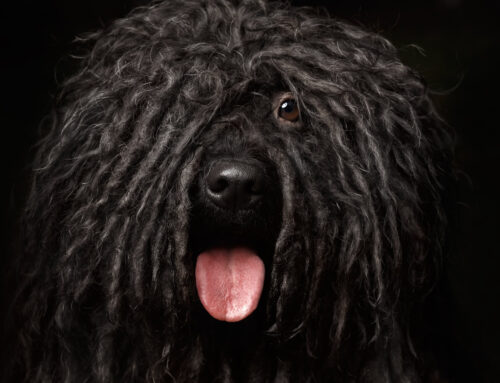Cross Breed or Pure Breed?
Possibly the hottest argument you’ll ever hear between dog owners, is the one between the owner of a pure bred champion, with papers showing an impressive lineage, and the owner of a mutt, who reckons his dog is, well…better than any purebred.
Well, what are the pros and cons?
(1) With a purebred, you know what you are getting.
Dogs of a particular breed come with known size, life spans, health issues, intelligence, temperaments… With a pure bred dog you are getting a known quantity.
With a crossbreed, you not only get a dog with a mix of the traits of the parents, you may get a dog whose traits are in fact different from both parents. Genetics tendencies that had been bred to latency in the purebreds could come out in a cross breed. This could be good or bad. You may breed in a dog with exceptional strength, but also exceptional aggression, both not seen in such quantities in either parent.
(2) You can determine Quality with a Pure Breed Dog
With a purebred, you can research the breeders bred stock history, meet the breed pair, see puppies from former litters, then make your choice.
With cross breeds, more often than not the pair are not chosen to breed…. More they choose each other. The two parents may not have been anything close to champion dogs to start with, and the children may well be even less so.
Those cute crossbred puppies in the pet shop? Buying a puppy from a pet shop is a dangerous choice. At least buying a cross bred from the paper, you can generally meet at least one of the parents… but a puppy from a pet shop… you aren’t going to get to see either parent.
(3) Crossbreed Vigor – Fact or Fiction.
In practice crossbreed Vigor exists and can be best shown by looking at the Husky. Huskies are not bred to any conforming standard, but instead to be the best they can be at their role as sled dogs. The end result is a breed with few genetic problems, breeders being able to breed different dogs into the breed rather than choose from a limited stock.
Another good example of this, is the life span or Pariah Dogs, and Dingos, both near 20 years. Natural selection has caused the strongest, longest living, most intelligent of those species to survive and thrive.
But what happens when you take the factors of “breeding for purpose” or “survival of the fittest” out of the equation when breeding cross breeds? All sorts of strange genetic results can be seen, many of them, not great. for example.
(i) in the far North of Australia where right across the top of Qld, the NT and WA the most obvious genetic footprint on the mixed breed dog population is that of a giant dwarven scent hound. The vast majority of mongrel dogs are short legged, long bodied. Clearly not the best hunters, they are not the toughest, and they are not the hardiest. But a northern Australian town dog is genetically selected to do well in its environment. They are town scavengers and can smell out food to scavenge better than most dogs. They can smell out a bitch in heat from further away and I am guessing they are also extremely fertile. And thus they have passed on their genetic material to the point that almost every “town dog” in the far North, looks like a mongrel sausage/bloodhound cross.
(ii) Around the world we are seeing the rise and the rise of the designer cross breed. People are crossing different types of popular dog breeds in an attempt to create a puppy with the desirable traits of both parents. Of course, there are many problems with this.
a. There is little testing being done of the breed stock to ensure the are genetically sound to start with.
b. There is no breed association monitoring the programs to ensure breeding standards are met, that genetically superior stock are used.
c. There is no monitoring of the prevalence of any new conditions that these cross breeds might be experiencing, that their parents did NOT have.
In order to create a breed, usually a very limited number of animals from different breeds are bred together, to create a new breed. At the start of a new breed, the offspring are inbred, till the breed breeds “true”. Its also true, that in creating this true breed, undesirable traits which are hard to breed out.
(4) You can show a Purebred.
If you want to show your dog, if winning best in show is your dream, then you need a purebred dog. Certainly there is more status to be had in owning a purebred dog as well.
(5) You can create your own Breed by Cross Breeding.
Its true. You can not create a new breed, breeding two dogs of the same breed, you need to cross breed. Emerging breeds such as labradoodles, golden doodles are the results of such cross breeding. Breeds such as the Australian Kelpie and Cattle dog, came from cross breeding working dogs to suit the hot, dry climate of the Australian Outback, no other dogs are now more suited the job these dogs perform.
(6) Cost
A purebred dog is going to cost more, no question, due to the limited number top quality dogs in each breed that are used for breeding. But pure breed dogs are usually subjected to far stricter health checks and genetic testing than cross breed dogs. Indeed, most cross bred dogs are not test for any possible problems. IN buying a cross breed dog, you may in fact be buying an unhealthy animal, from genetically flawed parents. Your costs are going to come down the track in larger vet bills.
Summary
Dog Breeders are an easy target. IN the press they are maligned for artificially inflating prices, breeding from small gene pools, and breeding for a visual standard rather than for health. In fact, dog breeders in the main LOVE their dogs and would never knowingly allow unsound animals into their breeding program, and go to great lengths and expense to test for undesirable physical and health issues in their dogs to ensure the best dogs are kept for breeding.
In Australia, there is great focus on ensuring dog breed gene pools are kept as wide as possible, breeders sourcing breed stock from around the country and from proven quality animals oversees ensure inbreeding never becomes the problem in Australia that it has become overseas.
At the end of the day buying a dog as a pet is a personal choice, but if overall cost of the dog, surety as to what nature your puppy is likely to have as an adult, likely life span etc are key considerations for you when buying a dog then at Just Us Dogs we recommend to –
- Research the Breed of Dog You are most Interested in.
- Contact the State Breed Association for details of what tests,(xrays, physical examinations and DNA testing) a breeder should be able to provide results from for their puppies.
- Get a list of the associations breeders. Its not crucial to focus on best of show winning breeders if you are looking for a pet, but make sure your breeder is reputable.
- View the parents of your puppy, and if possible, their parents.
- Examine your puppies extended pedigree. HAs their been inbreeding? For example, is the grandfather of the DAM also the sire of your potential puppy?
- Don’t buy a puppy over the net or from photos, physically inspect the puppy yourself.
- Speak to other people who have bought puppies from your chosen breeder.


Leave A Comment